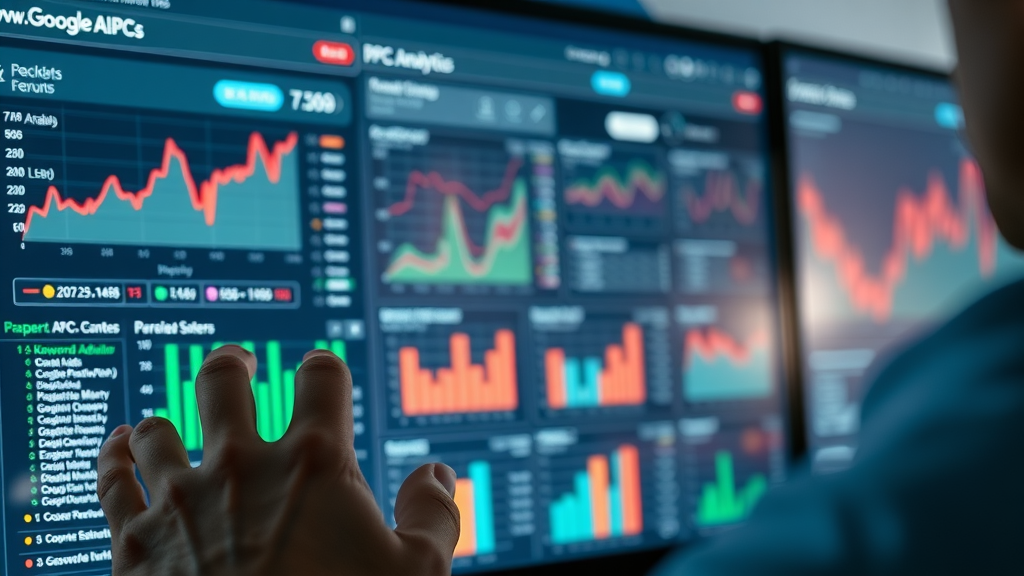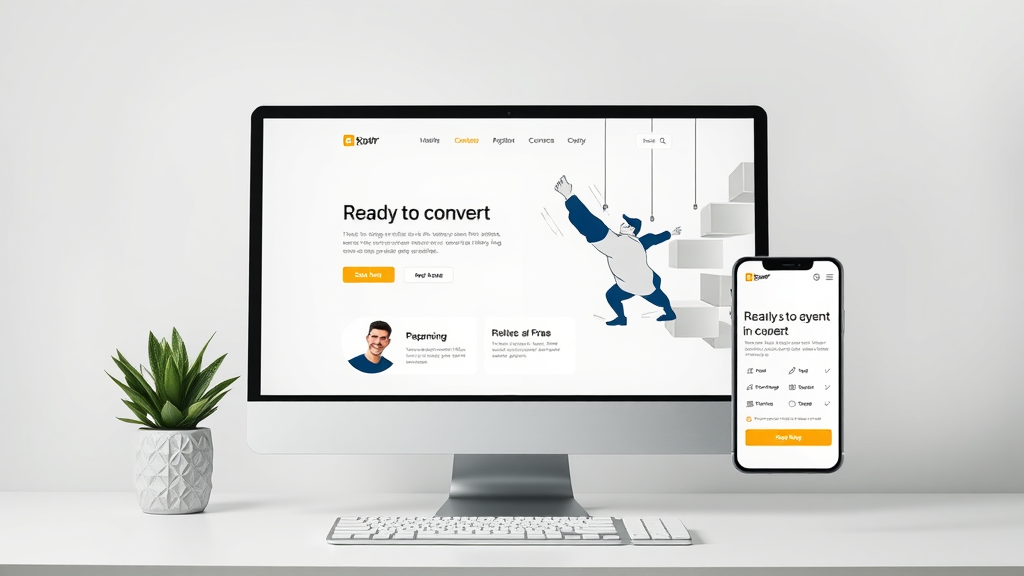Startling fact: Advertisers make $8 for every $1 they spend on Google Ads ( Google Economic Impact Report ). If your business isn't running a Google Adwords PPC campaign , you could be missing out on the fastest and most measurable way to drive new leads—often within minutes. This guide reveals the step-by-step mechanics, strategies, and secrets the top digital marketers use to turn ad spend into profit. Stick with us and learn how to achieve rapid ROI, bypass organic search waiting games, and pay only for real results.
Unseen Potential: Why a Google Adwords PPC Campaign Delivers Rapid ROI
One of the most significant perks of a Google Adwords PPC campaign is its ability to provide instant visibility on the search engine results page (SERP). Unlike the slow march of traditional SEO, your business can leap straight to the top of Google search results within minutes of launching your ads campaign . This means immediate exposure to people actively searching for solutions you offer—no waiting required. Your ads are shown to users looking for your specific keywords, translating into immediate leads and revenue.
Not only do you get in front of potential customers in real time, but you also benefit from complete control over your ad spend . Budgeting in a Google Adwords PPC campaign is entirely flexible; you set daily and monthly limits and pay only when someone clicks your ad. Highly targetable audiences allow you to focus on users based on geography, demographics, interests, and search terms . This fine-tuned targeting ensures your messaging hits the mark, amplifying the return on investment. With real-time data , you can watch what works and make quick improvements for even better outcomes.

"Advertisers make $8 for every $1 they spend on Google Ads" - Google Economic Impact Report
- Instant visibility
- Immediate leads
- Full cost control
- Highly targetable audience
- Real-time data for optimization
How a Google Adwords PPC Campaign Works: The Mechanics and Search Intent
Launching a Google Adwords PPC campaign means harnessing the power of paid search to place your business directly in front of shoppers on the Google results page. A PPC ad displays at the top and bottom of the page whenever someone searches for relevant search terms . Users click on your ad copy if it best fits their intent, and you pay only when a real person clicks—that’s where "pay per click" comes in.
With this online ad approach, every dollar of your ad spend is measurable and trackable. You can see which keywords convert, which ads drive calls or sign-ups, and tailor your campaign instantly for maximum ROI. What sets Google Ads apart from traditional organic search results is this immediate feedback and the ability to control targeting, budget, and message down to the smallest detail. The Google Ads marketplace operates on an auction system—your ads compete, and bidding, relevance, and quality determine if and where your ad appears.
Defining Google Adwords PPC Campaign, Google Ads, and Paid Search
Let’s break it down: Google Adwords —now officially called Google Ads —is Google’s advertising platform that lets you create paid listings in Google’s search engine results. PPC advertising (pay-per-click) describes the model in which you pay only when a user interacts with your search ad or display listing. A Google Adwords PPC campaign is your set of ad groups, keywords, and bids targeting specific desired outcomes. By leveraging paid search, you ditch the wait for organic rankings and instead bid on top placements on the coveted search engine result pages.
"PPC advertising puts your business in front of customers at the exact moment they're searching for your services."

Understanding PPC Ads, Google Ad Types, and Search Ads Example
When advertising through your Google Ads account , you can choose among several Google Ad types based on your campaign objectives and audience. Text search ads appear across Google’s regular search results and are the most common for capturing purchase-driven intent. Shopping Ads allow product-based businesses to feature inventory, prices, and images directly atop the engine results page . Display ads help with brand awareness, showing your promotions across millions of partnered sites beyond Google’s own pages.
For example, if you run a shoe store, a Google Adwords PPC campaign can showcase your products as sponsored listings with shopping ads when users look up "buy running shoes." Alternatively, use text search ads for high-intent keywords, directing leads to a custom landing page designed to drive conversions. The flexibility and breadth of ad types mean you can align your ads campaign directly with your business goals and your users’ search intent.
| Type of Ad | Placement | Purpose |
|---|---|---|
| Text Search Ad | Google SERP | Capture search intent |
| Shopping Ads | Google Shopping | Promote products |
| Display Ads | Google Display Network | Brand awareness, retargeting |
Setting Up Your First Google Adwords PPC Campaign: A Step-by-Step Guide
Ready to get started with your first Google Adwords PPC campaign ? It’s surprisingly straightforward if you follow a checklist and stay focused on goals. Start by creating your Google Ads account —this will be your command center for everything paid search. Next, clarify your campaign objectives: Are you aiming for more sales, phone calls, form sign-ups, or traffic to your website?
Once your goals are clear, the next step is keyword research. Choose words and phrases that your potential customers type into Google when searching for your services—these are your targets. Write attention-grabbing ad copy that closely matches your users’ search intent, and don’t forget to set a sensible daily budget. Finally, link your ads to analytics tools like Google Analytics to track every click, then launch your campaign and monitor performance daily for the best results.
- Create a Google Ads Account
- Define campaign goals
- Research keywords
- Write compelling ad copy
- Set your daily budget
- Link analytics tools
- Launch your ads
Crafting High-Converting PPC Ads: Copy, Structure, and Strategy
The success of your google ad often begins with the power of its words. Great ad copy isn’t about being clever—it’s about clarity and alignment with what your ideal customer is actually searching for. Carefully structured campaigns, with intentionally grouped keywords, lead to stronger performance and lower ad spend over time.
A winning ads campaign also requires ongoing optimization. By organizing your Google Ads account into logical structures—campaigns, ad groups, and keywords—you ensure each ppc ad is as relevant as possible. This refined targeting not only attracts more clicks but also increases your quality score , resulting in lower costs and a better return on investment.
Writing Click-worthy Ad Copy for Google Ads
To write click-worthy ad copy , start by speaking directly to your searcher’s intent. What does your customer want at the exact time they’re searching? Address this in your headline. Highlight what sets your business apart—special offers, free shipping, or exclusive guarantees. Back up claims with facts or numbers, and always pair your message with a strong call to action, like “Get a Free Quote Now.”
"Great ppc ad copy matches the searcher's intent and stands out from your competitors."
- Use primary target keywords
- Highlight unique benefits
- Include a strong call to action
- Match ad copy with landing page messaging
- Use numbers or statistics for credibility

Optimizing Your Ads Account, Google Ads Campaign, and Ad Groups
A well-structured Google Ads account sets the stage for easier management and improved results. Break your campaigns into tight-knit ad groups, each focused on related keywords or product themes. This approach helps your ppc ads resonate with users searching for those specific offerings, boosting ad relevance and improving quality score .
Don’t forget to continually test your ad copy, rotate ads to find top performers, and prune underperforming search ads . Group similar keywords and align each landing page with corresponding ads to keep the user experience seamless. The tighter your ad group structure, the more control you'll have over messaging, budget, and ultimately, ROI.
Managing Paid Search Campaigns: Budgets, Bidding, and Quality Score
Effective management of your paid search campaigns hinges on mastering two things: how much you spend and how efficiently your ad spend translates into results. With Google Ads, you choose between manual and automated bidding strategies. A smaller campaign may benefit from manual cost-per-click (CPC) for granular control, while larger accounts can let Google’s machine learning optimize automatically for conversions. Choosing the right bidding strategy depends on your budget and campaign objectives.
Understanding quality score is also critical. This number (from 1 to 10) measures how relevant your ads, keywords, and landing pages are to the people who see them. Higher quality scores generally lead to lower costs, better ad positions, and improved chances for success. To improve your ads campaign , continually refine your copy, landing pages, and keyword selection.
| Budget Setting | Bidding Strategy | Typical Use |
|---|---|---|
| Manual CPC | Full control over each keyword bid | Small to medium campaigns |
| Automated Bidding | Let Google optimize for conversions | Larger, dynamic campaigns |
Quality Score: Why It Matters in Google Adwords PPC Campaigns
The quality score is Google’s way of rating the relevance and usefulness of your ads for the search terms people use. Factors like your ad’s click-through rate (CTR), the relevance of your ad copy and keywords, and the experience on your landing page all play critical roles. A higher quality score yields better ad placements at a lower cost per click, stretching your ad spend further and improving your overall ROI.
If your ppc ad isn’t resonating—with a weak CTA or misleading landing page—your quality score may drop, forcing you to pay more for competitive keywords. Keep a close eye on this number, and aim for improvement with clearer, more persuasive messages and faster, more relevant landing pages.
- Landing page experience
- Relevance of ad copy
- Click-through rate
- Keyword-ad alignment

Optimizing Landing Pages to Maximize Google Adwords PPC Campaign Results
A stellar landing page is the secret weapon of any high-performing google ad . When a user clicks your search ad , the page it leads to should instantly confirm their expectations. Cohesive messaging between your ad copy and landing page signals relevance and builds trust, which means more conversions and a higher ROI.
Speed and purpose are everything. Fast-loading pages minimize bounce rates and keep eager customers engaged. Prominent, visible calls to action and an uncluttered design help guide users toward the specific conversion you want—filling out a form, making a purchase, or calling your business. Make sure the offer matches the promise in your ad and keep distractions at bay to help searchers focus on the next step.
Landing Page Must-Haves for Google Ads Success
Your Adwords landing page should be easy to read, quick to load, and laser-focused on the intent behind your ppc ads . Use concise, benefit-driven headlines that align with your ad copy. Keep your design cohesive—use your brand colors, straightforward navigation, and a clear path to conversion. The secret? Simplicity and relevance. A confusing or slow landing page can burn your ad spend without delivering a single sale.
- Simple, targeted messaging
- Fast page speed
- Prominent call to action
- Cohesive design with ad copy

Analysis: Measuring the ROI of Your Google Adwords PPC Campaign
To truly master your Google Adwords PPC campaign , you must measure everything that matters. Google Analytics and Google Ads reporting dashboards provide an abundance of data, but focus on key performance indicators (KPIs) that reflect real business impact. Monitor click-through rates, cost per click , conversion rates, quality score, and, most importantly, the return you get from your ad spend (ROI or ROAS).
Tracking these metrics shows you what’s working and what needs tweaking—whether it’s your ad copy, keyword selection, or landing page design. Monthly audits help spot trends or identify underperforming segments, giving you the opportunity to refine your ads campaign and maximize profit.
Key Performance Indicators for Google Ads, PPC Ads, and Search Ads
- Click-through rate (CTR)
- Cost per click (CPC)
- Conversion rate
- Quality score
- ROI and ROAS
Google Ads Account Audit: How to Identify Opportunities for Improvement
A regular Google Ads account audit can reveal hidden waste and new opportunities for rapid ROI improvement. Scrutinize your keywords—remove those with few clicks but high costs, and double-down on those driving conversions. Check your ad groups for focus and split overstuffed groups that might confuse Google's algorithm. Analyze ad copy performance and test new angles.
"Regular analysis lets you squeeze every dollar out of your Google Adwords PPC campaign."
Pay extra attention to the landing page experience and ensure fast load times and clear calls to action. Review search terms reports to discover negative keywords, and keep a close watch on quality score trends. Frequent auditing and tweaking keep your ads campaign efficient and bring more leads and sales without extra ad spend .

Common Mistakes in Google Adwords PPC Campaigns and How to Avoid Them
Even the most experienced marketers can stumble with Google Adwords PPC campaigns . One major pitfall is neglecting negative keywords: failing to exclude undesired search terms can drain your budget with irrelevant clicks. Poor ad group structure can confuse your message and undermine your quality score , resulting in higher costs and fewer leads.
Weak or misleading ad copy leads to low click-through rates and disappointed users. Ignoring your landing page relevance—if your page doesn't match the ad's promise or is slow to load—you risk wasted clicks. Lastly, many businesses "set and forget" their campaigns, missing optimization opportunities and blowing their ad spend needlessly.
- Neglecting negative keywords
- Poor ad group structure
- Weak ad copy
- Ignoring landing page relevance
- Setting and forgetting campaigns
People Also Ask
What is PPC campaign in Google Ads?
A PPC campaign in Google Ads is an online advertising strategy where you set up and manage ads that appear on Google's search engine results pages and across Google's advertising networks. You only pay when someone clicks on your ad. PPC campaigns are highly targeted toward specific keywords and customer intent, making them a fast way to generate new leads and sales for your business.
What is the difference between Google AdWords and PPC?
Google AdWords —now rebranded as Google Ads —is Google’s proprietary advertising platform where you can run PPC (pay-per-click) ads. PPC describes the overall model of paying per click, while Google Ads is a platform enabling you to use PPC strategies across Google’s network. In short, all Google Ads are PPC, but not all PPC happens on Google Ads.
What is an example of a PPC campaign?
An example of a PPC campaign is a shoe store bidding on the keyword “buy running shoes.” When a user searches for this phrase, the store’s search ad appears on top of the engine result page . If the searcher clicks the ad and buys shoes, the store pays Google for the click, making it a classic, results-driven ad campaign .
What is the difference between Google CPC and PPC?
PPC (pay-per-click) is the broader model where advertisers pay each time someone clicks on their ad, no matter the platform. CPC (cost-per-click) refers to the actual price paid per click in a PPC campaign. So, within your Google Ads (formerly AdWords) PPC account, you manage campaigns to get the lowest CPC possible for each keyword.
Frequently Asked Questions About Google Adwords PPC Campaigns
- Q1: How much budget do I need for a Google Adwords PPC campaign? Your ad spend can be as little or as much as your business allows. Many small businesses start with $10–$50 daily and scale up based on results. The key is to test, optimize, and invest more in what’s driving leads and sales.
- Q2: How soon can I see results from a Google Adwords PPC campaign? Most businesses see immediate visibility —often within hours of launching. Results like clicks, calls, or sales may come within the first day, especially if you target high-intent search terms and have strong landing pages .
- Q3: Can Google Adwords PPC campaigns work for small businesses? Absolutely! Google Adwords PPC campaigns let small businesses compete with big brands by targeting niche keywords, focusing on local areas, and keeping budgets tight. You pay only for real clicks, making every dollar count for your google business .
Key Takeaways for Google Adwords PPC Campaign Success
- Track everything from impressions to ROI
- Test ad copy and landing pages continually
- Use negative keywords
- Optimize for mobile
- Learn from PPC performance metrics
Ready to Supercharge Leads With a Google Adwords PPC Campaign?
If you would like to pay per result, rather than competing with companies with larger budgets, contact us at 207-710-1449 .
 Add Row
Add Row  Add
Add 








Write A Comment